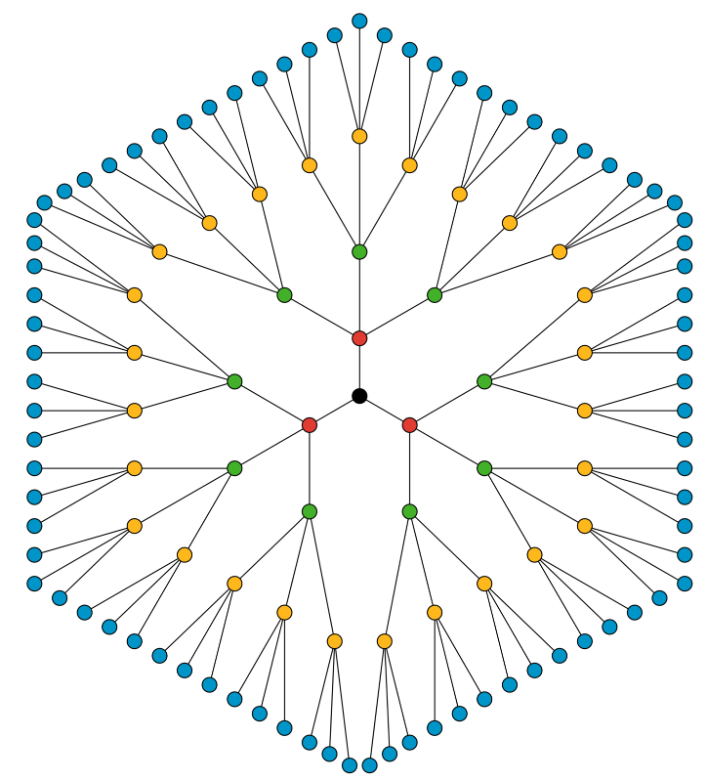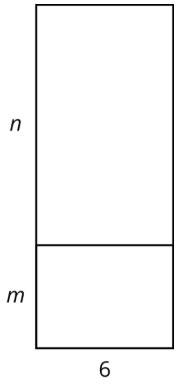33.1: Meaning of Exponents
( \newcommand{\kernel}{\mathrm{null}\,}\)
Lesson
Let's see how exponents show repeated multiplication.
Exercise 33.1.1: Notice and Wonder: Dots and Lines
What do you notice? What do you wonder?

Exercise 33.1.2: The Genie's Offer
You find a brass bottle that looks really old. When you rub some dirt off of the bottle, a genie appears! The genie offers you a reward. You must choose one:
- $50,000; or
- A magical $1 coin. The coin will turn into two coins on the first day. The two coins will turn into four coins on the second day. The four coins will double to 8 coins on the third day. The genie explains the doubling will continue for 28 days.
- The number of coins on the third day will be 2⋅2⋅2. Write an equivalent expression using exponents.
- What do 25 and 26 represent in this situation? Evaluate 25 and 26 without a calculator.
- How many days would it take for the number of magical coins to exceed $50,000?
- Will the value of the magical coins exceed a million dollars within the 28 days? Explain or show your reasoning.
Explore the applet. (Why do you think it stops?)
Are you ready for more?
A scientist is growing a colony of bacteria in a petri dish. She knows that the bacteria are growing and that the number of bacteria doubles every hour.
When she leaves the lab at 5 p.m., there are 100 bacteria in the dish. When she comes back the next morning at 9 a.m., the dish is completely full of bacteria. At what time was the dish half full?
Exercise 33.1.3: Make 81
- Here are some expressions. All but one of them equals 16. Find the one that is not equal to 16 and explain how you know.
23⋅24225282
- Write three expressions containing exponents so that each expression equals 81.
Summary
When we write an expression like 2n, we call n the exponent.
If n is a positive whole number, it tells how many factors of 2 we should multiply to find the value of the expression. For example, 21=2, and 25=2⋅2⋅2⋅2⋅2.
There are different ways to say 25. We can say “two raised to the power of five” or “two to the fifth power” or just “two to the fifth.”
Practice
Exercise 33.1.4
Select all the expressions that are equivalent to 64.
- 26
- 28
- 43
- 82
- 164
- 322
Exercise 33.1.5
Select all the expressions that equal 34.
- 7
- 43
- 12
- 81
- 64
- 92
Exercise 33.1.6
45 is equal to 1,024. Evaluate each expression.
- 46
- 44
- 43⋅42
Exercise 33.1.7
63=216. Using exponents, write three more expressions whose value is 216.
Exercise 33.1.8
Find two different ways to rewrite 3xy+6yz using the distributive property.
(From Unit 6.2.6)
Exercise 33.1.9
Solve each equation.
a−2.01=5.5
b+2.01=5.5
10c=13.71
100d=13.71
(From Unit 6.1.5)
Exercise 33.1.10
Which expressions represent the total area of the large rectangle? Select all that apply.

- 6(m+n)
- 6n+m
- 6n+6m
- 6mn
- (n+m)6
(From Unit 6.2.5)
Exercise 33.1.11
Is each statement true or false? Explain your reasoning.
- 45100⋅72=4572⋅100
- 16% of 250 is equal to 250% of 16
(From Unit 3.4.7)

